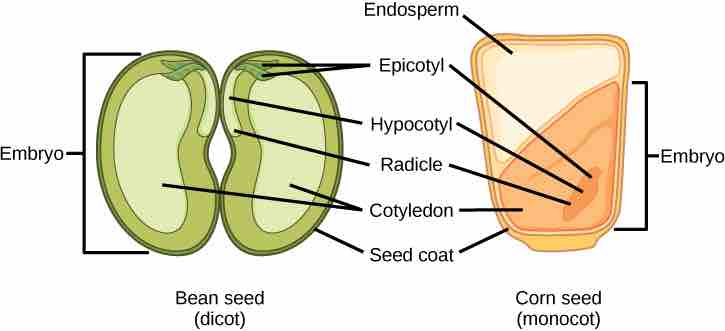Concept
Version 11
Created by Boundless
Development of the Seed

Monocots and dicots
The structures of dicot and monocot seeds are shown. Dicots (left) have two cotyledons. Monocots, such as corn (right), have one cotyledon, called the scutellum, which channels nutrition to the growing embryo. Both monocot and dicot embryos have a plumule that forms the leaves, a hypocotyl that forms the stem, and a radicle that forms the root. The embryonic axis comprises everything between the plumule and the radicle, not including the cotyledon(s).
Source
Boundless vets and curates high-quality, openly licensed content from around the Internet. This particular resource used the following sources:
"OpenStax College, Pollination and Fertilization. October 17, 2013."
http://cnx.org/content/m44723/latest/Figure_32_02_09.png
OpenStax CNX
CC BY 3.0.